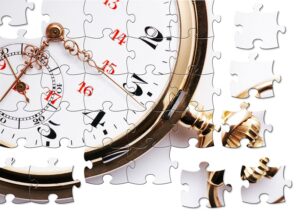 As time passes and more loyalty programs are launched, it’s becoming increasingly difficult to actually engage customers in the program. Customers are now so used to handing over a card or scanning a mobile device at the point of sale that they feel little real involvement. A program that operates passively in the background, and which delivers undifferentiated offers and uninspiring email statements, will do little to drive engagement. How can we better orient our programs to deliver real relationships with best customers? By focusing on the “Golden Moment.”
As time passes and more loyalty programs are launched, it’s becoming increasingly difficult to actually engage customers in the program. Customers are now so used to handing over a card or scanning a mobile device at the point of sale that they feel little real involvement. A program that operates passively in the background, and which delivers undifferentiated offers and uninspiring email statements, will do little to drive engagement. How can we better orient our programs to deliver real relationships with best customers? By focusing on the “Golden Moment.”
By Rick Ferguson
Real engagement grows little by little, each time the customer must actively think about and make a decision about the program. In fact, according to recent research, following their first redemption, loyalty program members' earn rates can increase by up to eight times compared to their previous point accrual rates. As a result, loyalty program operators must now find innovative ways to make sure the customer's first redemption happens as soon as possible in the customer lifecycle.
The day a customer makes their first redemption with your loyalty program is the day she can actually be counted as being 'engaged' - they have browsed through all the redemption options, found the best reward, and turned their loyalty into something tangible. In fact, loyalty marketers dub the experience of that first redemption “The Golden Moment”—and the best part is that, once a customer has had her first Golden Moment, she’s much more likely to come back for many more.
Customers who have made a redemption are on average eight times as valuable as those who have not. But, perhaps more importantly, those same customers increase their loyalty point accrual rate on average by 30%. These figures represent a significant increase in engagement, accrual, and consequently program profit by a segment of consumers who have already taken the time to enroll in the program. These are the consumers who will offer the greatest contribution to a successful loyalty program. They’ll drive profits to the company shareholders by ensuring that the loyalty program directly contributes to, rather than drains, company revenue.
Behavioral psychology tells us that a program operator could get most customers to change their behavior provided the reward is big enough. Given that very few of us enjoy unlimited reward budgets, however, the art of compelling reward design is to find that point of balance where:
- The reward is enough to entice the customer to keep participating;
- The reward is not so big that the customer becomes loyal to the reward and not to the brand;
- The reward is not so expensive that it makes the program uneconomical;
- The reward is structured so that it can be altered, reduced, or even withdrawn without alienating too many best customers;
- The reward is able to attract new customers of "best customer" profile;
- The reward encourages the customer to interact with the program frequently.
There is no question that customer loyalty drives revenue by driving engagement. What rewards drive engagement? The results of a recent online consumer survey from UK-based loyalty consultancy Uber revealed that consumers respond best to rewards that deliver a strong emotional impact: 79 percent of consumers surveyed want to feel like they're getting "the best benefits possible" from a brand; 75 percent said they love the "feel-good factor" of causing a little envy among their peers by enjoying exclusive program benefits; and 72 percent love a bit of "surprise and delight" when a brand delivers a so-called “random act of kindness.”
While points-based programs are still a sound strategic investment, the proliferation of “me-too” programs that offer “points for trinkets” have found consumers indifferent to them: only 50 percent of respondents are excited by the idea of a points-based program, while only 11 percent said that "collecting points to receive a gift from a catalogue would turn me on." To differentiate, points programs must now offer a range of rewards from instant-gratification to aspirational rewards. Consumers now also expect their points to be fungible, leading to the current trend of instant-redemption rewards, points-plus-cash, and points exchanges with partners.
There is no more crucial point on the customer loyalty journey than the “Golden Moment” of first redemption. It’s the linchpin of your loyalty strategy; for that moment to deliver, the reward must be immediately engaging, delivered flawlessly, and followed by communications devised to capitalize on the moment and encourage the customer to continue along the path to the next reward. It’s one of the best tools we have to demonstrate our loyalty to our best customers.
Rick Ferguson is Editor in Chief of the Wise Marketer Group and is a Certified Loyalty Marketing Professional (CLMP).




